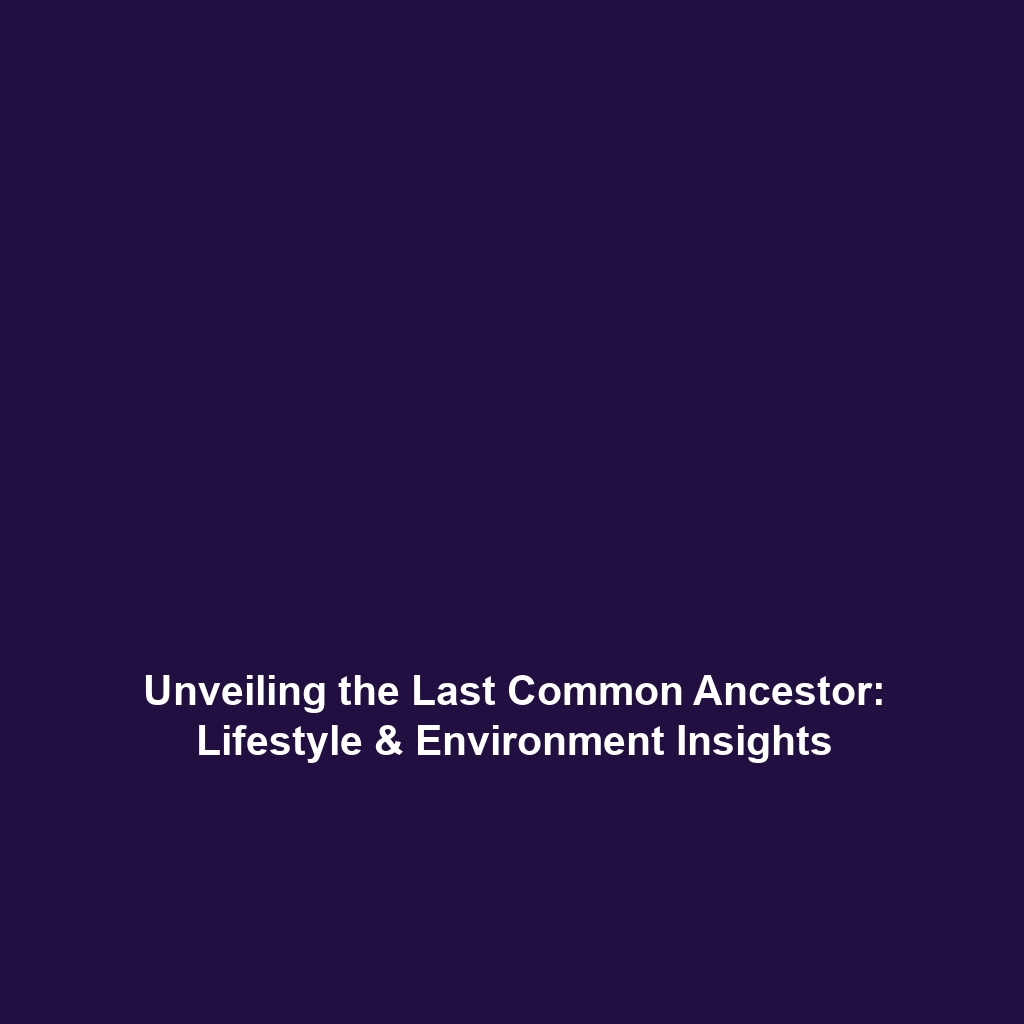Bipedalism in Australopithecus: A Key to Human Evolution
Introduction
Bipedalism, or walking on two legs, marks a pivotal point in the story of human evolution. The Australopithecus, a genus of hominins that roamed Africa millions of years ago, exhibited a remarkable anatomical combination of an ape-like upper body and a human-like lower body. This unique adaptation signifies early forms of bipedal locomotion, a critical evolutionary step that allowed our ancestors to navigate diverse environments efficiently. Understanding how Australopithecus walked provides insights into the evolutionary pressures that shaped modern humans and underscores the significance of bipedalism within the broader context of human evolution.
Key Concepts of Bipedalism
Bipedalism is a defining characteristic of the hominin lineage, distinguishing humans from other primates. The following key concepts help explain its significance:
1. Anatomical Features
The Australopithecus displayed a combination of skeletal features that facilitated bipedalism:
- Pelvic Structure: The pelvis is shorter and broader, allowing for upright walking.
- Leg Proportions: Longer lower limbs relative to their upper bodies enhance stability and stride.
- Foot Structure: A developed arch and alignment of toes support weight distribution during walking.
2. Evolutionary Advantages
Adapting to bipedalism conferred several advantages, such as:
- Freeing the hands for tool use.
- Improved visibility over tall grass and reduced exposure to predators.
- Energy-efficient locomotion over long distances.
Applications and Real-World Uses of Bipedalism
Understanding bipedalism in Australopithecus helps us uncover not only the roots of human behavior but also informs various fields:
- Physical Anthropology: Studying early human movement patterns.
- Paleoecology: Insights into the environmental adaptations of ancient hominins.
- Robotics: Designing bipedal robots by learning from human biomechanics.
Current Challenges in Studying Bipedalism
Despite advancements in paleoanthropology, several challenges remain:
- Incomplete Fossil Record: Gaps in fossils limit our understanding of bipedal evolution.
- Interpretation of Adaptations: Differentiating between adaptations for bipedalism and those for arboreal living can be complex.
- Technological Limitations: Current imaging techniques may not capture all nuances of skeletal remains.
Future Research and Innovations
Upcoming innovations promise to advance our understanding of bipedalism and its evolution:
- 3D Imaging: Enhanced imaging technologies may reveal new insights from fossil morphology.
- Genomic Studies: Analyzing ancient DNA could illuminate genetic changes related to bipedalism.
- Biomechanical Modeling: Simulations of movement can offer predictions on the capabilities of ancient bipedal walkers.
Conclusion
Bipedalism in Australopithecus represents a significant milestone in the narrative of human evolution. The unique anatomical adaptations highlight the complexities of ancient mobility and the evolutionary journey of our species. As research progresses, further understanding of this pivotal development will not only enhance our knowledge of our ancestors but also address influential themes in anthropology and beyond. For more insights on human evolution, explore our related articles on early hominins and the evolution of walking.




